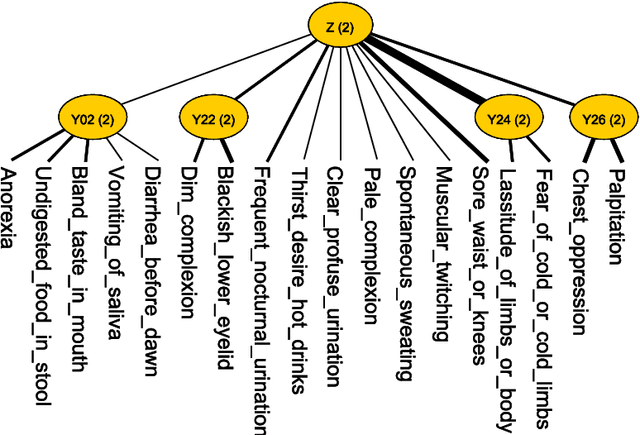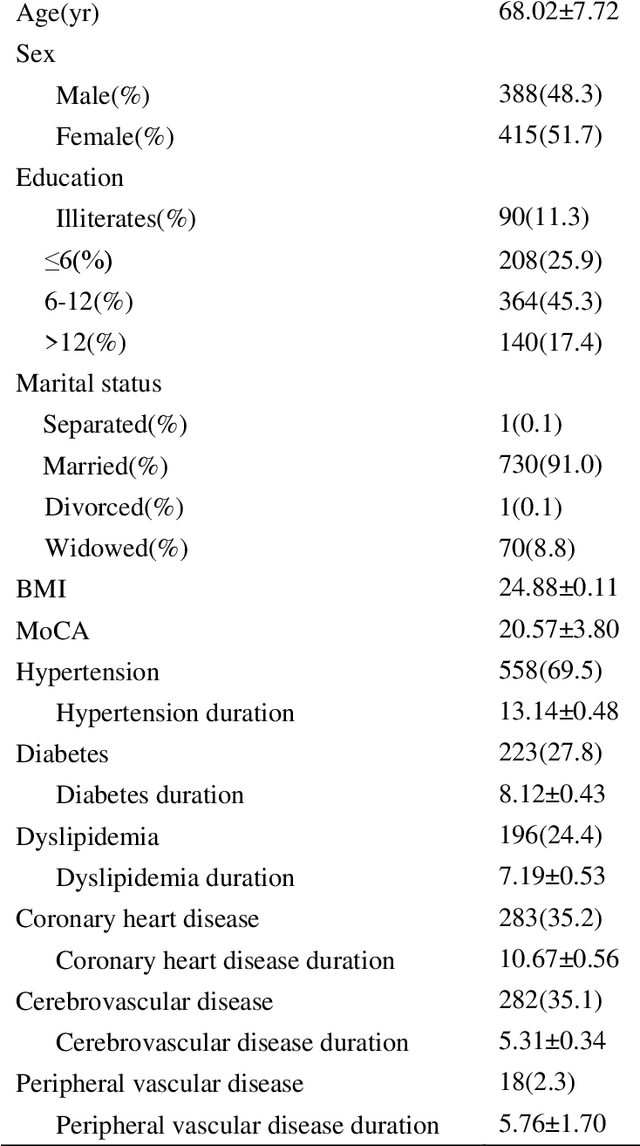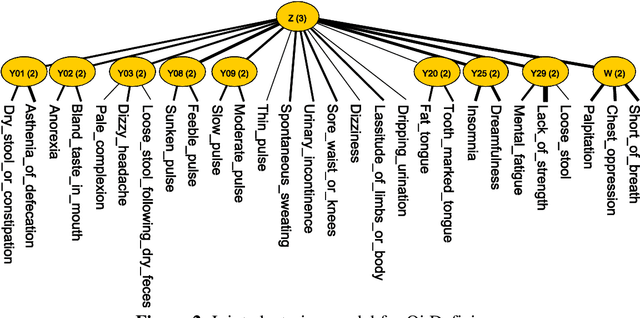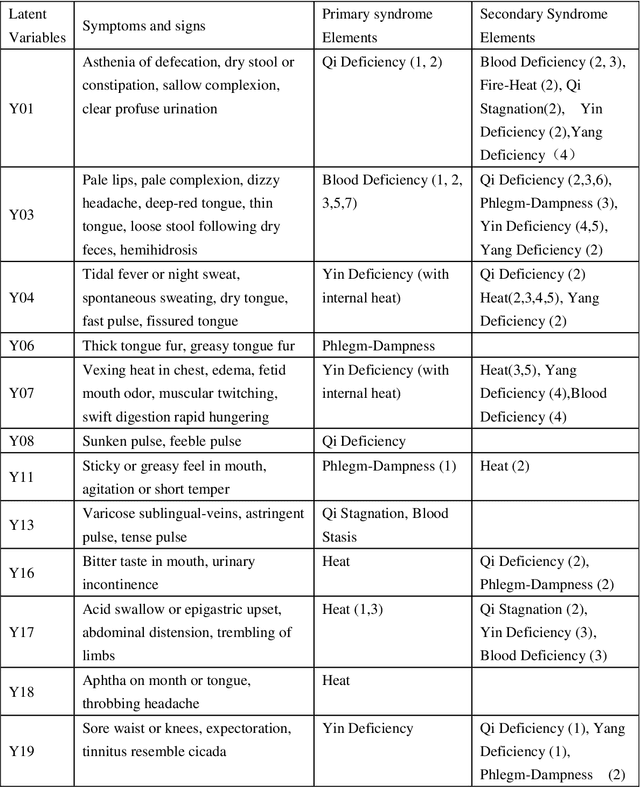Identification and classification of TCM syndrome types among patients with vascular mild cognitive impairment using latent tree analysis
Paper and Code
Feb 24, 2016



Objective: To treat patients with vascular mild cognitive impairment (VMCI) using TCM, it is necessary to classify the patients into TCM syndrome types and to apply different treatments to different types. We investigate how to properly carry out the classification using a novel data-driven method known as latent tree analysis. Method: A cross-sectional survey on VMCI was carried out in several regions in northern China from 2008 to 2011, which resulted in a data set that involves 803 patients and 93 symptoms. Latent tree analysis was performed on the data to reveal symptom co-occurrence patterns, and the patients were partitioned into clusters in multiple ways based on the patterns. The patient clusters were matched up with syndrome types, and population statistics of the clusters are used to quantify the syndrome types and to establish classification rules. Results: Eight syndrome types are identified: Qi Deficiency, Qi Stagnation, Blood Deficiency, Blood Stasis, Phlegm-Dampness, Fire-Heat, Yang Deficiency, and Yin Deficiency. The prevalence and symptom occurrence characteristics of each syndrome type are determined. Quantitative classification rules are established for determining whether a patient belongs to each of the syndrome types. Conclusions: A solution for the TCM syndrome classification problem associated with VMCI is established based on the latent tree analysis of unlabeled symptom survey data. The results can be used as a reference in clinic practice to improve the quality of syndrome differentiation and to reduce diagnosis variances across physicians. They can also be used for patient selection in research projects aimed at finding biomarkers for the syndrome types and in randomized control trials aimed at determining the efficacy of TCM treatments of VMCI.
 Add to Chrome
Add to Chrome Add to Firefox
Add to Firefox Add to Edge
Add to Edge